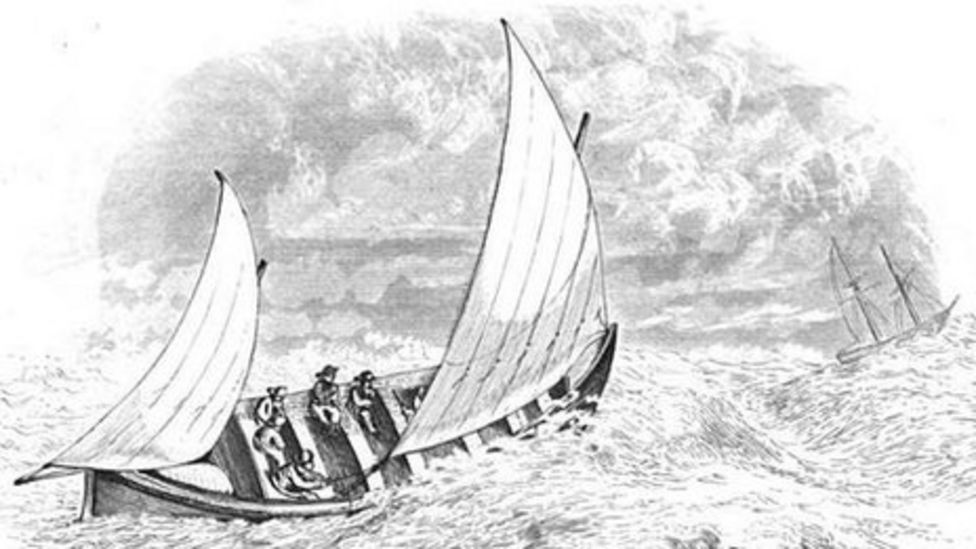John Evans, Lifeboatman
John Evans endured conditions beyond anything most of us are likely to experience and paid the price on January 22, 1853 when the Rhyl lifeboat “Gwynlan y Mor,” set out to help a vessel which had lost its mast off the West Hoyle Bank.
The RNLI had not yet arrive in Rhyl and a lifeboat had been placed there by the Shipwrecked Fishermen and Mariner’s Society in 1852. Considered to be state of the art, the Duke of Northumberland had been so impressed that he had awarded the designer 100 guineas and pronounced it to be the best type of lifeboat available. The truth was that when those nine men set out, it was common knowledge that two identical lifeboats, one stationed at Lytham and the other at Caernarfon, had capsized the previous October with the loss of sixteen men—both on the very same day.
The distress signal went up at 5 o’clock on a Saturday afternoon and it was already dark as the men rowed the first three miles and then hoisted their sail in a moderate gale. They lost sight of the distressed vessel which had been covered by the flowing tide and because they were unable to effect a rescue, the master decided to return to Rhyl. They managed to turn about, a dangerous manoeuvre to accomplish under sail but their problems started when they were about a quarter of a mile off shore. The boat suddenly lurched and threw one of the men overboard. He was hauled back on board before they were swamped again, causing the boat to turn over—throwing all but one into the sea. Captain Owen Jones and two of the crew managed to right and reboard her but the remaining six men, including John Evans, were last seen about fifty yards off before they were lost sight of. The mast of the lifeboat was broken but they had by this time come quite close to the shore and the crew were able to use a boat hook to shove her onto the beach.
In light of the previous disasters with the same type of boat, the North Wales Chronicle, January 28, 1853 interviewed Captain Jones:
“The men were all perfectly sober, and no blame could be attached to any. I have been much disappointed in the boat, on account of its capsizing in righting powers, the water ballast we completed. I don’t approve of her model, being too round in the bottom; it would not be so liable to capsize if its bottom had a flatter floor. I told the crew, and Mr. Wauklyn, it was hardly worth while going out, as the vessel was on the bank, and I had seen a boat with sails going out to her, Mr. Wauklyn said I had better make an attempt. The crew were all willing to go. The boat had not too much sail on her. All the crew had life preservers on, and they were all in in good order. I have examined the boat since, and found her tight in every respect.”
“Gwynlan y Mor” was replaced when theRNLI took over in 1854 and then, in 1856 Rhyl, received a much superior tubular lifeboat called “Morgan”. The grave of John Evans may be seen quite easily from the path leading down to the new graveyard in Meliden. Go as far as the point where the hand rail begins where on the left you will see Sarah Green’s grave with a Celtic cross. His grave is the flat slab immediately behind and slightly to the left. His connection with Meliden is not known and I have not been able to find him in the 1851 census.

